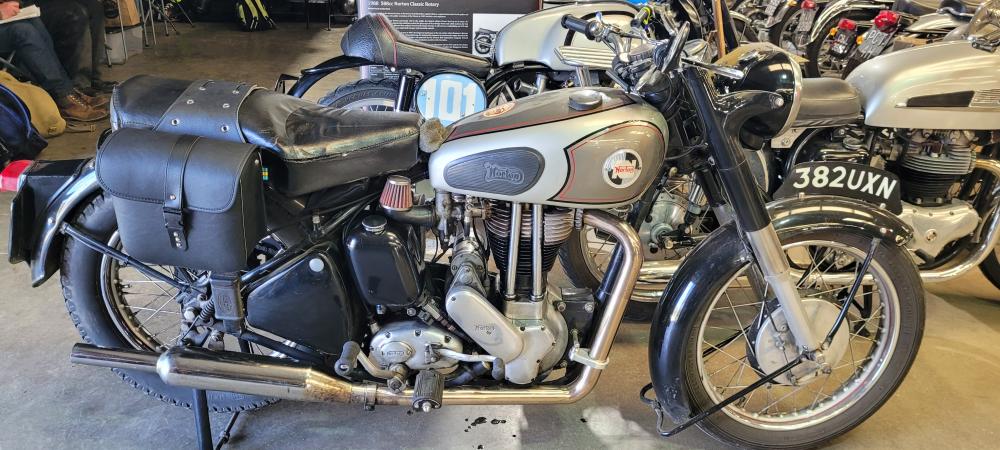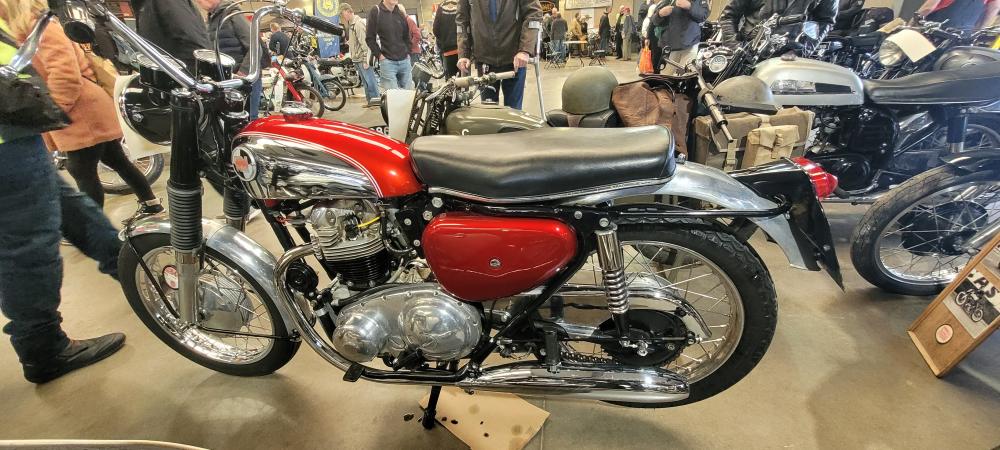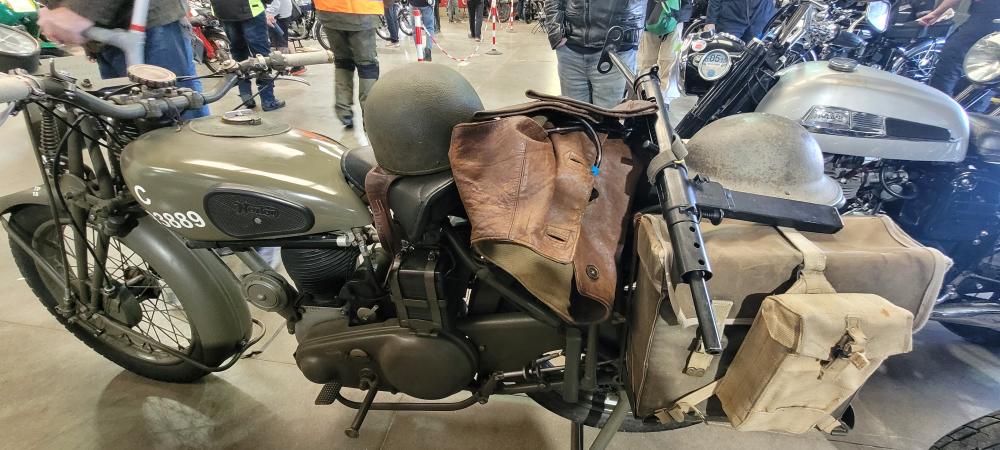A review of correspondence from NOC-L
A discussion about replacing Norton gearbox layshaft bearings, both nearside and offside
Nearside
Is a Superblend type needle roller bearing conversion worth the extra cost?
While looking through the catalogues I've collected for a list of pieces I'll need for the transmission on my 1971 Commando, I saw a 'Superblend' type of layshaft bearing listed.
It sounds like a good idea but the price of $42.50 is a little steep compared to $15.67. Is the Superblend type bearing really worth it?
Jeff Schneider (jeffpeg@nantucket.net) on NOC-L 2nd. Sep 1997
Needle roller bearing - a product recommendation
I always thought the bearing conversion was a standard upgrade whenever doing work to the Commando gearbox. It has been mentioned in the INOA Tech Digest as a good idea. I changed mine out 10 or 15 years and 20,000 miles ago and have not had any problems (but then, I wasn't having any problems with the bushing, either). It's not such a big deal to do the job, and the bearing is available for around £12.50, or you can find a SKF NJ203-C3 from a bearing supplier.
Stan Smith (sks3rd@aol.com) on NOC-L 2nd. Sep 1997
Rebuilding worn layshafts & Superblend type needle roller bearings
Regarding needle rollers in 1960s models, I have a BSA service manual for the Gold Star. Apparently the RRT shafts are supported by needle roller bearings, and this box was introduced in the mid-1950s. Worn shafts are easily restored if shaft ends are at fault. Plasma spraying followed by grinding and case hardening does the trick. Be sure to know the hardening procedure beforehand. Filling scrolls by welding and grinding is not recommended due to the introduction of brittle zones.
Easier still is ordering a new layshaft (040025) without scrolls. The cost is only £52.30 (around US$84) from the UK. Given sufficient demand it could probably be finished to exact dimensions for fitting the needle roller. However, I don't like the idea of reducing shaft diameter because the layshaft is marginal as it is. The aim of this battle is to reduce flexing, so better to increase it and grind the kickstart boss to a fitting dimension. If any of you are interested in going this route, please let me know and we can do a small batch at a competitive rate.
The Superblend bearing is recommended by Les Emery. Whether it is worth fitting or not depends on whether you accept that the layshaft flexes under heavy load and you want to prevent the radial bearing from failing. In my opinion it's worth the money. Actual prices from the UK are around £12.50 (ca. US$20), so a lot cheaper than the figure that has been mentioned.
Knut Sonsteby (kso@lhg.hib.no) on NOC-L 2nd. Sep 1997
Needle roller bearing conversion - advised
If you are going to ride the bike a lot, I'd replace the bearing with a needle roller type. I lost the original bearing and, as a result, nearly lost the transmission case as the layshaft was chewing its way into the primary. I replaced it with the roller bearing and have now ridden another 4000 carefree miles over the last 2 - 3 years.
Richard W. Dennison (dennison@mail1.nai.net) on NOC-L 3rd. Sep 1997
Needle roller bearings - product codes for different types
|
"NJ203 C3 (Type E, as I recall) seems to ring a bell as the code for the ball inner bearing for the layshaft. Although this code was quoted by one correspondent as that of the needle roller bearing for one conversion kit. |
Wrong - NJ203E.TVP2 (NJ203E.M1, NJ203E) are roller bearings replacing ball bearing 6203. Different suffixes indicate roller cages made of Polyamid 66 (an advantageous option), brass or steel, respectively. They all have modified contact lines to avoid high edge stresses ('Superblend').
In addition, the C3 rating provides additional clearance overthe C2 standard clearance. I doubt NJ203E bearings now being sold have C3 clearance. Measuring crankshaft Superblend bearings from the same source I found their clearance to be C2 although C3 would have made more sense.
Knut Sonsteby (kso@lhg.hib.no) on NOC-L 5th. Sep 1997
Needle roller bearings - product codes
I can confirm that the above number [NJ203 C3] is correct for the near-side roller bearing: it is of two piece construction, with the rollers and cage captive to the outer race. When fitting this style of bearing, you will find it necessary to shim the inner race on the layshaft, in order to have the correct layshaft end float once installed.
Greg Kricorissian (grkricor@ccs.carleton.ca) on NOC-L 31st. Aug 1997
Offside
Is a needle roller bearing conversion worth it?
The problems caused by the off-side layshaft bearing in the Norton box are very well known. The bronze bush can wear fairly quickly, and then cause binding inside the coaxial kickstart shaft. When this happens, the kick starter pivots backward during hard acceleration in the lower gears. Conversion to a needle roller bearing should make this less of a problem because of lower friction and better support of the shaft with less binding.
A well known supplier advertises a needle bearing conversion for the Norton box, to replace the flanged bush that normally goes in the kickstart shaft, and picks up the offside end of the layshaft. A couple of questions come to mind, for those of you who may have tried it:-
|
The scrolled end of the layshaft has to be ground down to fit the layshaft - from my measurements, it would appear that you do not remove enough material to remove the scroll This cannot be a good surface for the needle rollers to run on. - Is the hardened surface deep enough to withstand grinding to a smaller diameter? |
|
Is this a worthwhile conversion, or does it (as some sources claim) support the layshaft too rigidly, and render it prone to "snapping like a carrot"? |
Greg Kricorissian (grkricor@ccs.carleton.ca) on NOC-L 31st. Aug 1997
Needle roller bearing conversion recommended (with some reservations)
Bert Hopwood's design was for a box with a much smaller load range; the original 500cc twin was ultimately stretched to 828cc. The layshaft on pre-unit Triumph twins runs in bronze bushes and these were subsequently upgraded to needle rollers in the early 1960s with the unit engines. In looking for used Triumph pre-unit layshafts for my restorations, the selection of 'good' shafts is pretty slim - due to most examples being very worn where they run in the bronze bushing - some over 0.010". This leads me to my latest endeavours of installing needle rollers into the pre-unit box, a worthwhile job with readily available parts although it needs a good layshaft to work properly.
In the Norton box, the bronze bushing has always been a source of problems. I have often thought of how to improve on it, but came up short in terms of finding the parts to execute the task. SRM have worked wonders with extending the life of the unit BSAs. Jim Sinclair's famed 830 BSA Spitfire is now local here in Vancouver. It was one of SRM's prototypes, and has lasted 200,000 miles with general maintenance. Attention was paid to hardening parts where required (crankends, gearbox parts, axle spindles), and I would expect that if they market a layshaft conversion for the Norton that any adjustments to the layshaft itself would have to be rehardened, probably also with the scrolls filled. I don't believe it would need a thrust washer as the first gear shoulder on the layshaft, and not the face of the bronze bushing in the kick-start spindle, prevents lateral movement.
Jim Bush (jba@express.ca) on NOC-L 1st. Sep 1997








